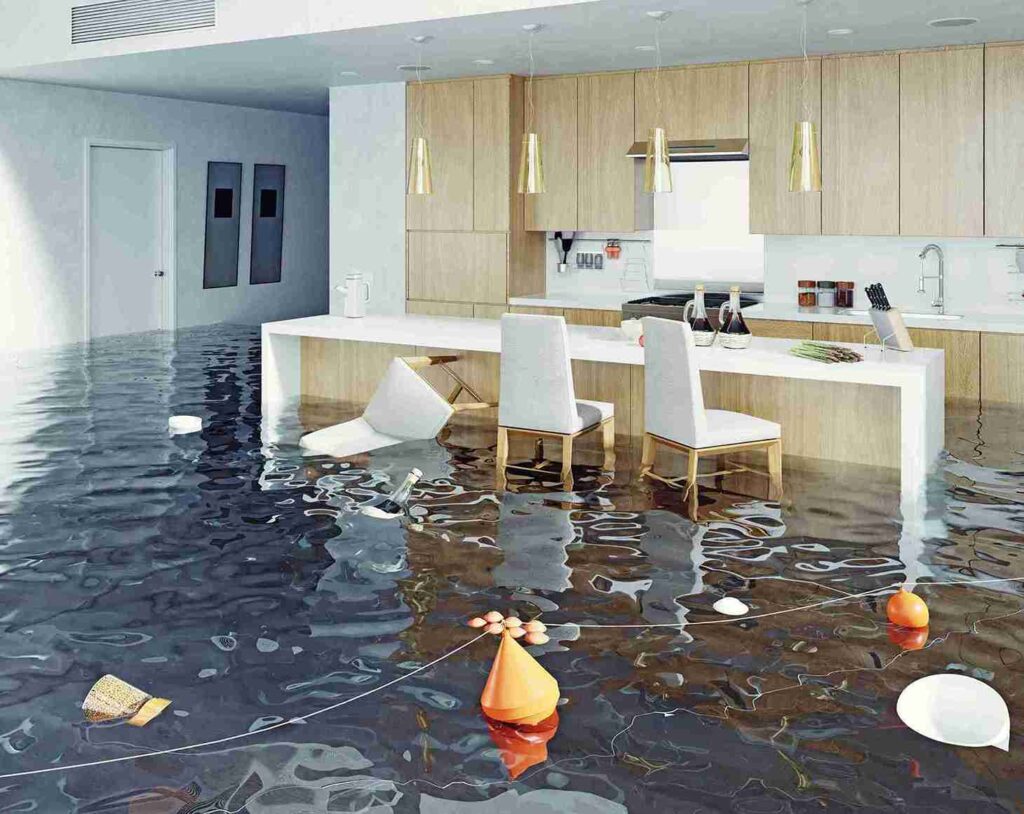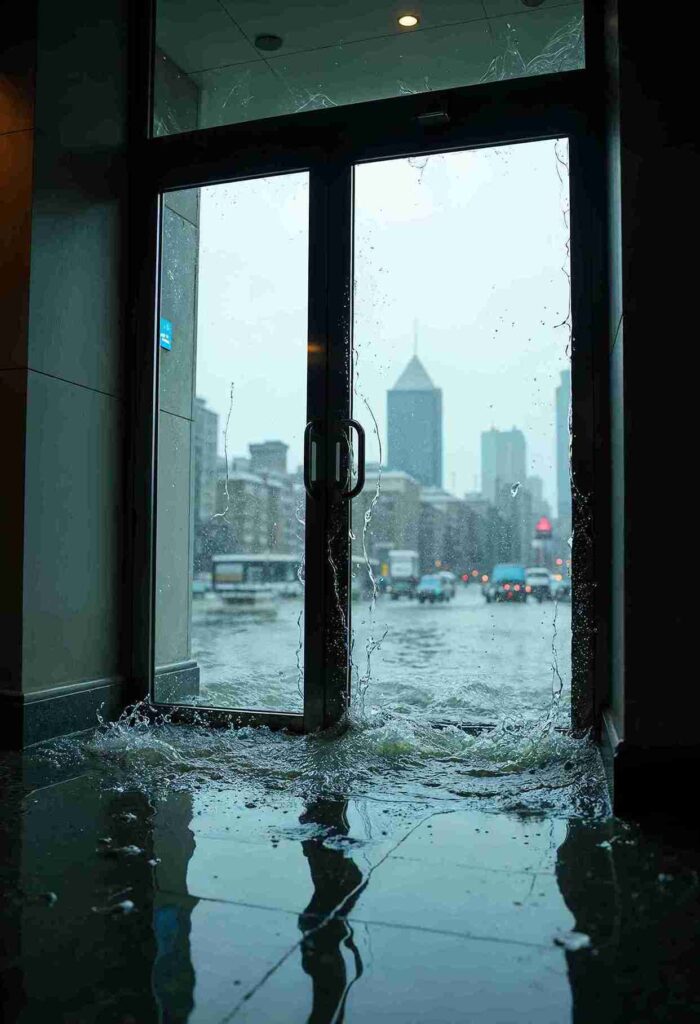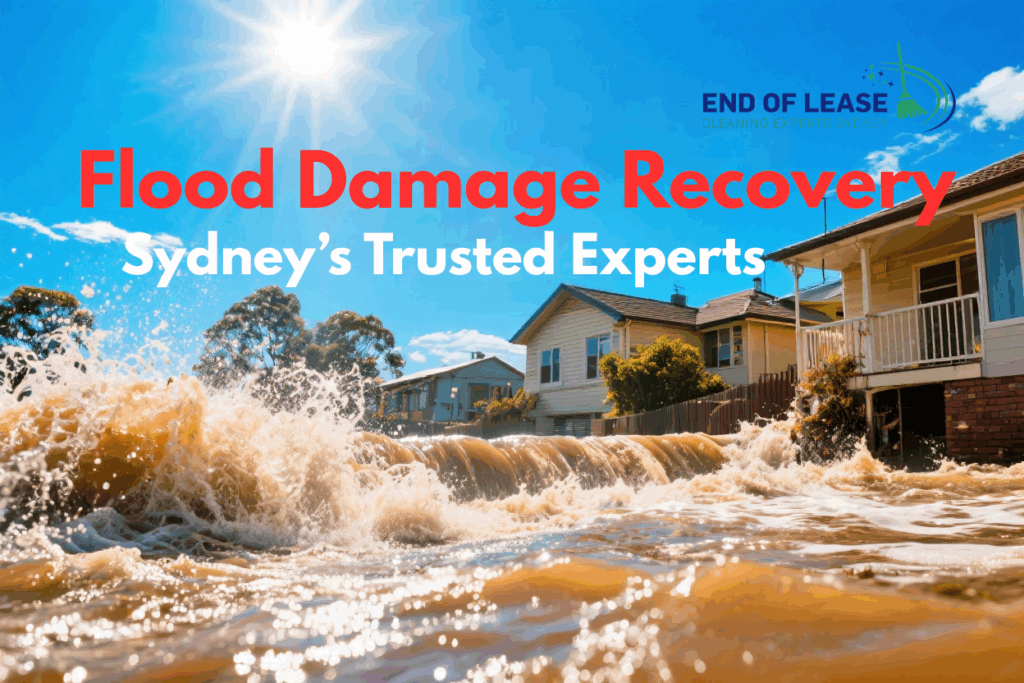Did you know the first 48 hours after a flood are the most critical for damage control? Acting quickly after flood damage can mean the difference between a manageable cleanup and long-term structural, financial, and health consequences.
In flood-prone areas like Sydney, knowing what to do immediately after water damage is essential. With years of local experience in flood damage restoration, our certified team has helped hundreds of Sydney homeowners and businesses recover safely and swiftly.
Here are the 10 immediate steps you must take after flood damage — including safety, insurance, and mould prevention.
1. Prioritise Your Safety
The very first step after flood damage is to make sure you and your family are safe. Floodwater can be deceptive — it often carries hidden risks like electrical currents, sewage, or sharp debris. That’s why you need to act quickly but carefully.
Here’s what you should do:
- Turn off electricity and gas at the mains — but only if it’s safe to do so.
- Do not touch electrical outlets or appliances if there is standing water nearby.
- Evacuate the property immediately if there are signs of structural damage, such as sagging ceilings, cracked walls, or buckled flooring.
- Wear protective clothing, including rubber boots, gloves, and a mask. This reduces your risk of exposure to bacteria, mould spores, or sharp debris.
- Keep children, elderly family members, and pets away from the affected areas.
Why this matters: Floodwaters in Sydney often mix with sewage systems and stormwater runoff, which can carry serious contaminants. Also, electrical hazards are a leading cause of post-flood injuries.
Your safety is the foundation for everything that follows — never compromise it to rescue items or begin cleanup.

2. Call Emergency Services (If Needed)
Flood damage isn’t just messy — it can be life-threatening. If there’s any immediate risk to life or property, calling emergency services must be your first move.
Contact professionals if you notice:
- Gas leaks (rotten egg smell, hissing sound near pipes)
- Exposed wiring or electrocution risk
- Structural damage, like a collapsing wall, ceiling, or roof
In Sydney and New South Wales, here are the emergency numbers to save:
- 000 – For life-threatening emergencies
- 132 500 – State Emergency Service (SES)
- 131 909 – Jemena (for gas leaks)
Tip: Don’t try to fix electrical or gas issues yourself. Let certified professionals handle it — even minor mistakes can be fatal.
Calling for help early helps protect not just your property, but everyone inside it. Even if you think you can manage things, it’s always better to get a safety assessment when in doubt.
3. Stop the Source of Water (If Possible)
Once it’s safe, the next step is to stop the water flow, especially if it’s from a burst pipe, broken appliance, or overflowing tank.
Take these steps if you can safely reach the source:
- Shut off your main water supply (usually found outside or near the meter).
- Use towels, buckets, or sandbags to limit water spreading through rooms.
- If water is entering from outside, try to block entry points using plastic sheeting or sandbags.
This step may not apply if flood damage is from stormwater, but reducing further inflow is key to keeping the situation manageable.
Why it’s important: The longer water flows, the more it soaks into floors, walls, and furniture, increasing both the damage and repair costs.
If you can’t stop the water safely, wait for professionals. It’s not worth the risk.

4. Document Everything for Insurance
Once the immediate danger has passed and it’s safe to return inside, it’s time to document the flood damage in detail. This step is essential for filing an insurance claim and proving losses. Insurers need clear, time-stamped evidence to process your compensation fairly.
Here’s how to do it:
- Take photos and videos of every affected room, item, and structure (walls, floors, furniture, appliances).
- Focus on water lines, soaked materials, and visible mould or stains.
- Keep receipts and invoices for anything you purchase in response to the flood — pumps, cleaners, hotel stays, etc.
- Log all actions taken, including cleanup, phone calls to your insurer, emergency services, or restoration companies.
- Back everything up to the cloud (Google Drive, Dropbox, iCloud) in case your phone or computer is damaged.
Pro Tip: Label your photos by room and date to make your claim process smoother.
Documenting early prevents disputes with your insurance company. And in flood-prone areas like Sydney, being meticulous can fast-track your payout and protect your long-term recovery.
5. Contact Your Insurance Provider Immediately
After documenting everything, your next step is to notify your insurance provider as soon as possible. The sooner they’re aware of the flood damage, the sooner they can guide you through their claim process and even recommend approved restoration vendors.
Here’s what to do:
- Call your insurer and explain what happened.
- Ask about what’s covered (structure, contents, temporary housing, etc.).
- Find out if you need to use specific repair contractors approved by your policy.
- Ask about your claim number and request written instructions on the next steps.
- If you’ve been forced out of your home, check for emergency accommodation benefits.
Tip: Take notes during every conversation and ask for email confirmation.
Many Sydney homes may have storm or flood coverage under different policies, so don’t assume you’re covered — ask and confirm. Acting fast helps avoid claim delays and ensures emergency expenses (like hotel stays or replacement items) are reimbursed.
6. Remove Standing Water Safely
The longer standing water remains in your home, the worse the damage gets. As soon as you can, begin removing the water — but make sure to do it safely.
Follow these steps:
- Use wet/dry vacuums or water pumps (not standard home vacuums!).
- If you don’t have one, hire or request help from a flood restoration company.
- Wear gloves and waterproof boots, especially if the water is discoloured or smells — it could be contaminated.
- Dispose of heavily soaked or contaminated items (e.g., carpets, soft toys, mattresses).
- Open doors or windows to allow airflow during the drying process.
Important: Avoid wading through water if power hasn’t been confirmed off by a professional — there’s a risk of electrocution.
In Sydney’s humid climate, stagnant water breeds mould and bacteria fast. Every hour counts, so act quickly or call a 24/7 restoration team to assist with industrial pumps and dehumidifiers. This one step could save thousands in future repair costs.
7. Prevent Further Damage
Once you’ve removed most of the standing water, the focus should shift to minimising any additional damage before professionals arrive. Even after the initial flood, your property remains vulnerable to water spread, mould, and exposure to the elements.
Take these steps as soon as it’s safe:
- Cover broken windows and doors with plastic sheets or plywood.
- Use a tarp to temporarily seal roof leaks or gaps that could let rain in.
- Move salvageable furniture and electronics to dry, elevated areas.
- Prop up wet cushions and mattresses to help air circulate underneath.
- Remove rugs or mats that could trap moisture in the flooring.
Why this matters: Quick, temporary fixes can prevent further moisture damage and save thousands in repairs.
These small actions help preserve more of your belongings and buy you time while waiting for professional restoration. In Sydney’s unpredictable weather, a second rainfall or humid day can worsen an already fragile situation, so acting fast is crucial.
8. Start Ventilation
Ventilation is one of the most important steps you can take within the first 24–48 hours after flood damage. Moisture trapped in walls, floors, and ceilings is the perfect environment for mold and bacteria to grow.
Here’s how to get the airflow going:
- Open windows and internal doors if weather and safety allow.
- Use portable fans to direct airflow into wet areas.
- Set up dehumidifiers to pull excess moisture from the air.
- Remove baseboards or drill small holes (if advised by pros) to allow walls to dry from the inside.
Why ventilation matters: Mould can begin forming in as little as 24 hours, and once it spreads, it becomes a serious health hazard.
In Sydney’s often-humid conditions, controlling moisture is half the battle. Good airflow not only speeds up drying but also helps reduce lingering odors and protects your home from long-term damage.
9. Call a Certified Flood Restoration Specialist
Even with all your efforts, professional help is essential for complete flood recovery. DIY drying may only tackle surface-level moisture, while water can remain hidden behind walls and under floors. That’s why you need a certified flood restoration expert.
Make sure to choose a provider with:
- IICRC certification (gold standard in water damage restoration)
- 24/7 emergency service availability
- Local experience with Sydney properties and climate challenges
- A full-service approach: extraction, structural drying, mould prevention, repairs
Our team offers 24/7 Emergency Flood Response in Sydney with fast dispatch, state-of-the-art equipment, and trained technicians who can assess, restore, and prevent long-term damage.
Need urgent help? Call now for a free on-site inspection.
A proper restoration job doesn’t just clean — it protects your health, home, and property value in the long run.
10. Monitor for Mould & Health Hazards
Even after drying and cleanup, your home may still be at risk, especially from mould growth and hidden health hazards. Mould thrives in moisture-rich environments and can start forming in unseen places like wall cavities, under carpets, and behind cabinets.
What to watch out for:
- Musty or damp odours that linger days after drying
- Dark spots or fuzzy patches on walls, ceilings, or furniture
- Respiratory symptoms, sneezing, headaches, or skin irritation — especially if new or unexplained
Why act fast? Mould spores can affect indoor air quality and pose risks to children, elderly people, and anyone with asthma or allergies.
If you notice any of these signs, call a mould remediation expert immediately. Delaying treatment may result in the need for extensive demolition, more expensive repairs, or long-term health concerns.
In Sydney’s climate, mould isn’t just a possibility — it’s a common aftermath of flood damage. Stay alert and take action early to avoid turning a small problem into a major crisis.
Conclusion
Flood damage can be stressful, but taking the right steps can make a huge difference. In the first 48 hours, everything you do, from putting your safety first to calling pros, can protect your health, lower long-term damage, and lower repair costs. Do not wait; write down everything, let your insurance company know, and start drying as soon as it is safe to do so.
If you live in Sydney and have flood damage, our IICRC-certified team is ready 24 hours a day, 7 days a week to help with emergencies, water removal, drying, and full restoration. We know how important it is to act quickly and have the tools to help you get your home or business back to normal in a safe and effective way.
Check out our services for fixing flood damage.
Get in touch with us for a free evaluation.
Let us help you get your property — and your peace of mind — back.



